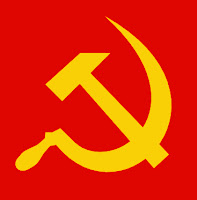 The Communist party of India (Marxist Leninist) Red Flag [CPI (ML) RF] came into existence in 1988 as the continuation of CRC CPI (ML) [Central Reorganisation Committee], which had its roots in the original organisation. The CRC was formed with the major pro-CM comrades of Kerala in late 70s. According to the Official Document of RED FLAG -
The Communist party of India (Marxist Leninist) Red Flag [CPI (ML) RF] came into existence in 1988 as the continuation of CRC CPI (ML) [Central Reorganisation Committee], which had its roots in the original organisation. The CRC was formed with the major pro-CM comrades of Kerala in late 70s. According to the Official Document of RED FLAG -“In 1979, after many leading comrades getting released from jail, initiative was taken to reorganize the party based on the basic positions of CPI (ML) and on rejection of Theory of Three Worlds (TWT) and the Chinese leadership who had been upholding TWT. Comrades from Kerala and Andhra Pradesh took initiative to form RC CPI (ML) and later it was developed to CRC CPI (ML) in 1982.
“From 1982 onwards the concept of political reorganization had met with serious challenges from the petit-bourgeois anarchist tendencies that were dominant in the party such as, negation of class mass organizations, legal, open and parliamentary activities, united fronts with other political organizations and parties etc.
“With in the 25 years of its history the party faced two splits. The first split took place in 1987 and the second in 2003. In 1987 K. Venu the then General Secretary began to evaluate neocolonialism as a separate era from that of imperialism, began to explain nationality struggle to be the class struggle of the period of neocolonialism and began to find comradeship with Khalisthan like separatist movements . This caused serious differences within the party. Venu was not ready to settle this question democratically within the party. So he splited away from the party in the midst of the democratic process of a national conference. Later Mr. Venu dissolved his party and joined bourgeois rightist forces.
“After the split in 1987 August the party was reorganized and in 1988 CPI (ML) Red Flag was born. Under the banner of CPI (ML) Red Flag the political reorganization process advanced. Reinstating Comintern positions that were let down at the time of 1969 party formation, rectifying the left sectarian positions of cultural revolutions and building up party and united front activities, the party made rapid advances. In 1997, in the fourth conference party rectified the question of contradictions at the international level by reinstating the cardinal importance of main contradictions as stated in the colonial thesis of Comintern. The obliteration of other three main contradictions by the contradiction between imperialism and oppressed nations and oppressed people and the erroneous concept of principal contradiction were rectified. Altogether this change effected an axiomatic shift by eliminating the concept of ‘Soviet Social Imperialism’. The manifestation of this rectification reached to the extent of party programme and constitution only by the Vth conference in 2000. In that conference the party accepted a new programme eliminating the enormous positions put forth at the time of party formation in the name of Mao thought and Cultural Revolution.
“But, K.N. Ramachandran the then secretary of the party, and a section of the leadership, refused to accept this development and tried to split the organization sabotaging the democratic process of the VIth conference. The splitists tried to retract to the semi-colonial semi-feudal position, rejected left alternative and the positions for left unity, tried to find propaganda platform in WSF and put forth an opportunistic proposal of alliance and unity with the CPI (ML) Kanu Sanyal group. In all the senses the splitists threw the political reorganization to winds.
“But CPI (ML) Red Flag overcame this ordeal in the VIth conference by resolving to reorganize the party and called a special conference to evaluate the split and to accept an approach to tactical line that should be practiced. The party advanced to further development of left alternative and the left unity in the field of theory and practice.
“Now CPI (ML) Red Flag is moving…to attain an uncompromising position regarding its approach towards imperialist globalization and all sorts of reactionary forces at the domestic front. “













